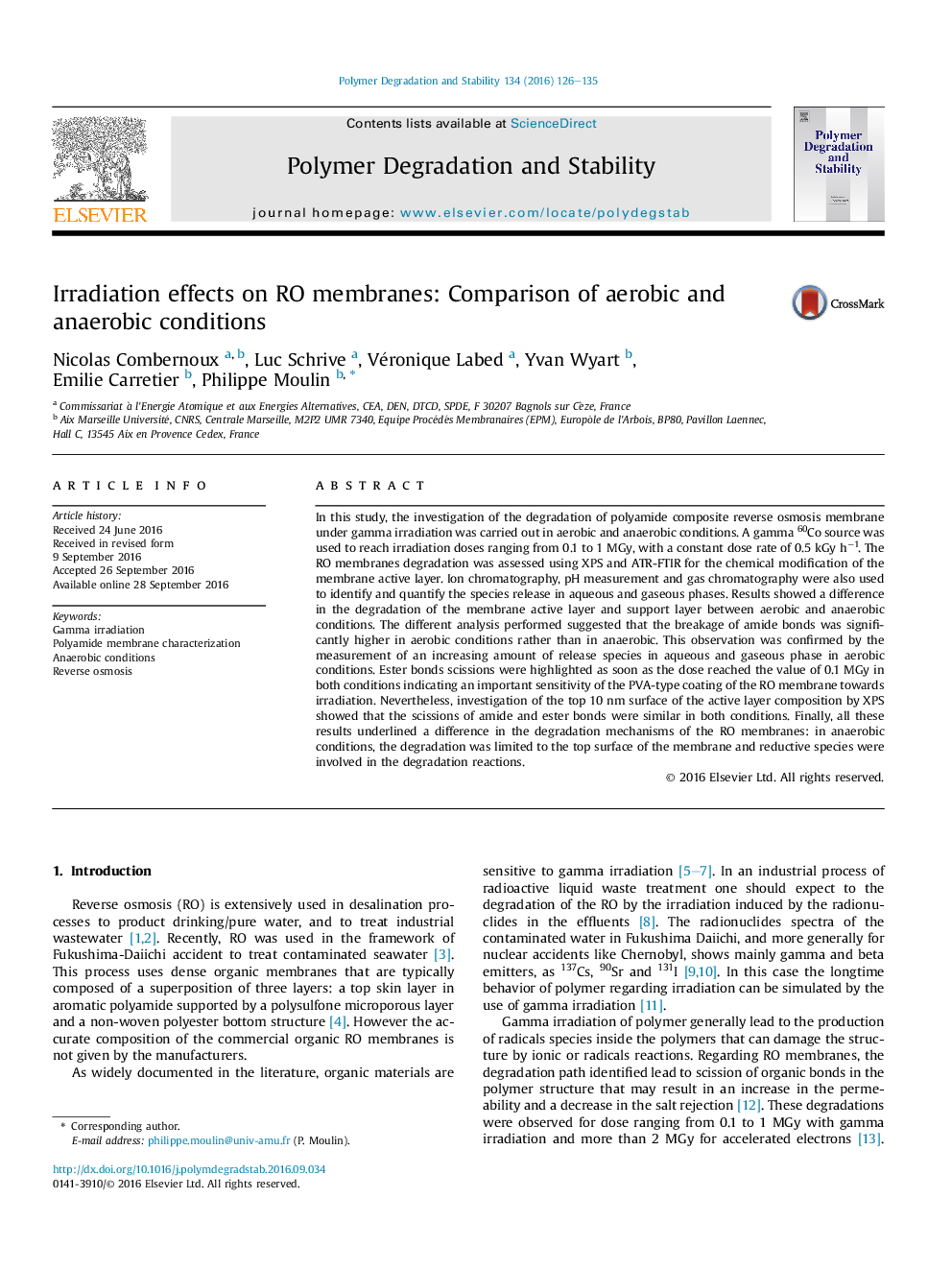| Article ID | Journal | Published Year | Pages | File Type |
|---|---|---|---|---|
| 5200889 | Polymer Degradation and Stability | 2016 | 10 Pages |
Abstract
In this study, the investigation of the degradation of polyamide composite reverse osmosis membrane under gamma irradiation was carried out in aerobic and anaerobic conditions. A gamma 60Co source was used to reach irradiation doses ranging from 0.1 to 1 MGy, with a constant dose rate of 0.5 kGy hâ1. The RO membranes degradation was assessed using XPS and ATR-FTIR for the chemical modification of the membrane active layer. Ion chromatography, pH measurement and gas chromatography were also used to identify and quantify the species release in aqueous and gaseous phases. Results showed a difference in the degradation of the membrane active layer and support layer between aerobic and anaerobic conditions. The different analysis performed suggested that the breakage of amide bonds was significantly higher in aerobic conditions rather than in anaerobic. This observation was confirmed by the measurement of an increasing amount of release species in aqueous and gaseous phase in aerobic conditions. Ester bonds scissions were highlighted as soon as the dose reached the value of 0.1 MGy in both conditions indicating an important sensitivity of the PVA-type coating of the RO membrane towards irradiation. Nevertheless, investigation of the top 10 nm surface of the active layer composition by XPS showed that the scissions of amide and ester bonds were similar in both conditions. Finally, all these results underlined a difference in the degradation mechanisms of the RO membranes: in anaerobic conditions, the degradation was limited to the top surface of the membrane and reductive species were involved in the degradation reactions.
Related Topics
Physical Sciences and Engineering
Chemistry
Organic Chemistry
Authors
Nicolas Combernoux, Luc Schrive, Véronique Labed, Yvan Wyart, Emilie Carretier, Philippe Moulin,
